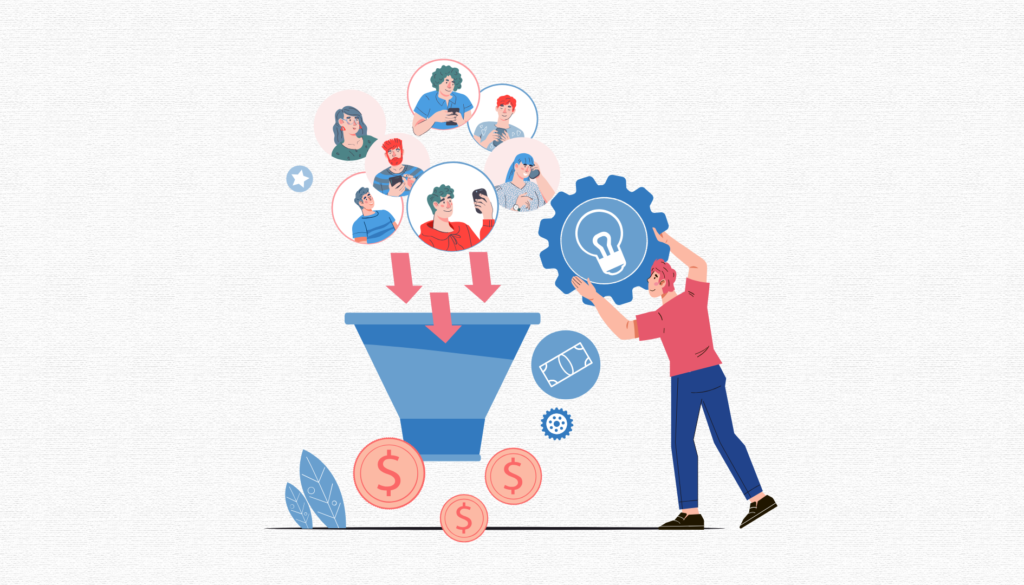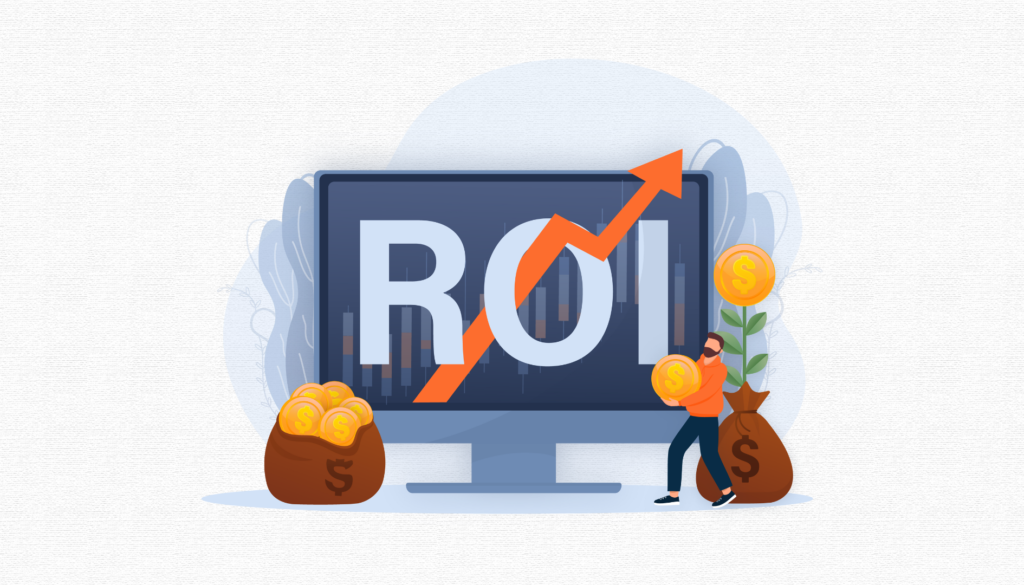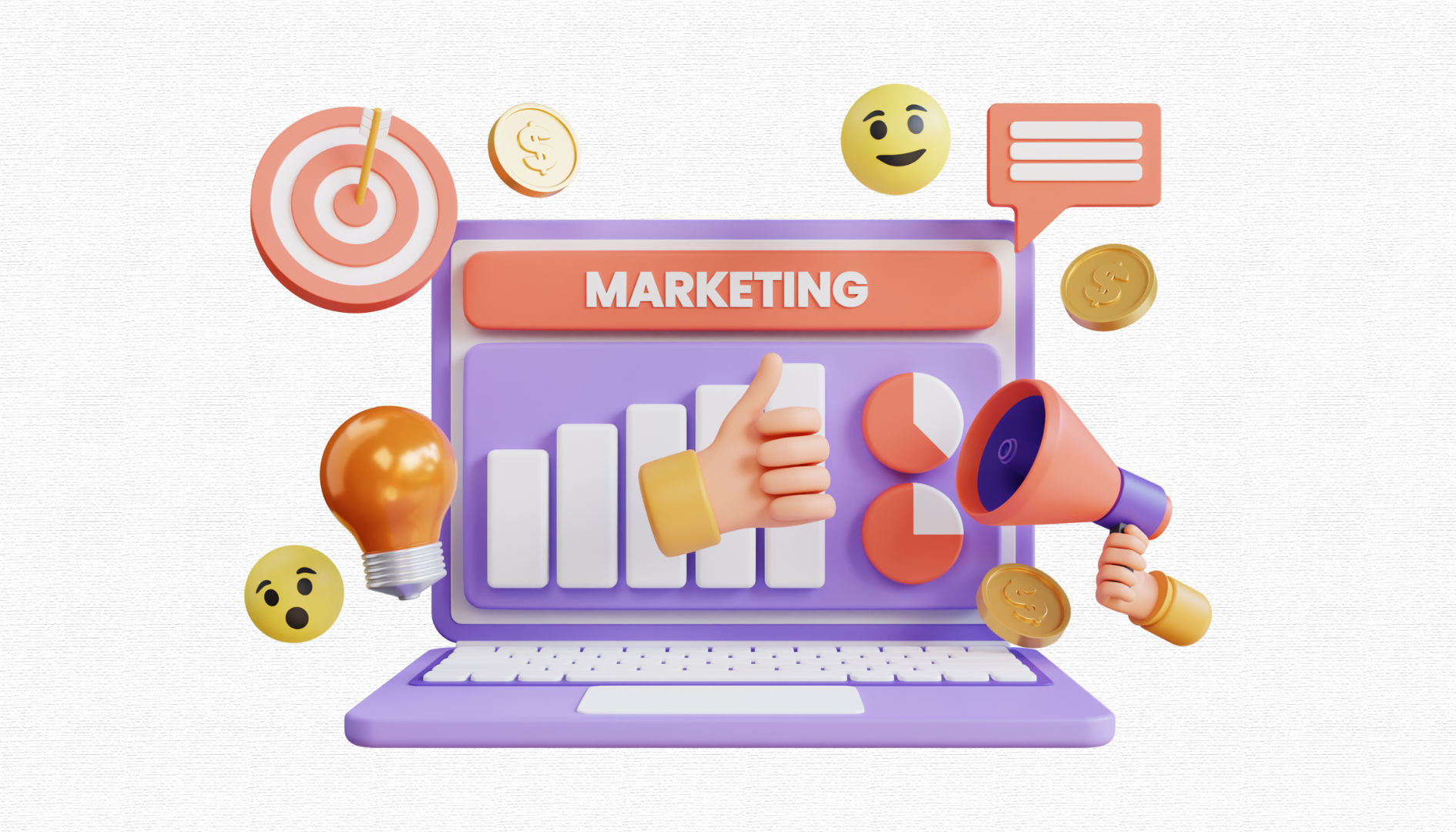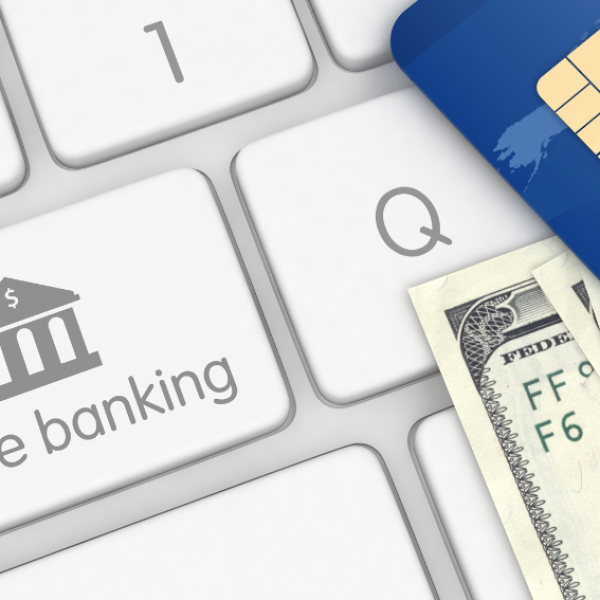At any moment, millions of potential customers are searching online for products or services they need. As a business owner, your task is to grab their attention and turn these leads into paying customers.
This process, known as lead conversion, involves several techniques to boost sales. Every marketer aims to create an effective lead conversion funnel.
But what does it take to achieve this? What is lead conversion? How do you develop a successful lead conversion strategy? And what are some effective practices for enhancing your efforts? In this article, we will examine the concept of lead conversion and various methods you can employ to improve your outcomes.
In This Article
ToggleWhat Is Lead Conversion?

Lead conversion occurs when a visitor takes an action that classifies them as a lead. This can also refer to a prospect moving from one stage to another in the lead generation process, such as when a lead becomes a paying customer.
Converting visitors into leads and customers requires a series of targeted strategies. Different approaches are employed at each stage to move leads further along the conversion path.
Typically, leads progress through several stages before becoming customers. The conventional process typically involves the progression of:
- Visitors to Leads
- These leads then become market-qualified leads.
- Market-qualified leads (MQLs) become sales-qualified leads
- Sales-qualified leads (SQLs) become customers.
At each stage, it is crucial to provide opportunities for leads to take actions that advance them to the next level. While the specific processes may vary between businesses, the fundamental goal remains: transforming leads into paying customers.
Understanding the Lead Progression Steps That Help You Grow
- Initial Awareness: Potential customers become aware of your product or service during this stage. This could happen through an advertisement, a friend’s recommendation, or other methods.
- Marketing-Qualified Lead: The potential customer shows interest in your offerings by visiting your website or subscribing to your newsletter. They might also fill out a contact form or contact your business directly.
- Sales-Qualified Lead: At this point, the individual is recognized as prepared for sales interaction. This stage indicates their willingness to explore your offerings more closely with a sales representative.
- Customer: This is the final stage in the conversion process, where the lead purchases and becomes a customer. The focus then shifts to retaining their business and encouraging loyalty.
What Is Lead Conversion Rate?

Understanding lead conversion includes knowing the lead conversion rate (LCR), a metric that quantifies how effectively leads are turned into customers. To calculate LCR, divide the number of conversions achieved within a specific period, such as the last 12 months, by the number of leads during that time. Multiply the result by 100 to get the percentage. The formula is:
Lead Conversion Rate = (Total No. of Conversions / Total No. of leads) x 100
For example, if you had 1,000 leads over the past 12 months and converted 200 into paying customers, your conversion rate would be 20% ((200 / 1,000) x 100 = 20). Analytics software can track your conversion rate across different times to determine if it has increased or decreased.
An effective lead conversion rate differs across industries, depending on factors like target audience and lead quality. Typically, a 2% and 5% conversion rate is normal for various sectors. Businesses that focus on well-targeted and carefully nurtured leads often report higher rates.
Industry standards, competitor outcomes, and past sales figures must be examined to determine a suitable lead conversion rate for a particular company. Regularly reviewing and refining marketing strategies is essential for attaining and sustaining a desirable conversion rate.
Why Is Lead Conversion Significant?
Lead conversion is pivotal to your company’s performance and growth. Converting leads into customers generates revenue, helps build a loyal customer base, and enhances brand awareness.
A high lead conversion rate indicates the effectiveness of your sales and marketing efforts, allowing you to focus on generating high-quality leads. This process is crucial for a successful sales and marketing strategy as it drives business expansion and increases profitability.
What Are the Advantages of Monitoring Lead Conversion?
Understanding lead conversion involves grasping the process and recognizing its critical role in enhancing business and marketing strategies, which aim to boost sales and attract more customers.
Monitoring your lead conversion offers numerous benefits:
- A Good Indicator for Managing ROI: By tracking, you can identify which marketing and sales tactics are working and which aren’t, helping you distribute your budget more efficiently.
- Prioritizes Leads: Monitoring your conversions lets you discern which leads are more likely to make a purchase and which are not, enabling you to allocate your resources more effectively.
- Supports Data-Driven Decisions: Having reliable data from lead conversion tracking empowers you to make decisions that keep your business competitive.
- Improves Team Collaboration: When marketing and sales teams track lead conversion, it fosters better cooperation and enhances overall performance.
- Essential for B2B Sales: Tracking lead conversion is vital for B2B companies dealing with longer and more complex sales cycles.
- Aids in Long-Term Planning: Tracking also helps recognize trends and patterns in your sales data, which supports accurate forecasting and strategic planning and keeps you ahead in the competitive market.
Strategies for Improving Lead Conversion
We’ve gathered tips from industry experts to share their proven methods for turning potential clients into actual customers. Here are some tips for converting leads into sales.
Define the Target Audience
Grasping who your target audience is forms the cornerstone of effective lead conversion. This step requires understanding potential customers’ demographics, psychographics, needs, and preferences. With this knowledge, you can develop personalized marketing strategies and messages that connect with your audience.
Improve Your Lead Capture Process
To turn visitors into customers, you must first capture and qualify their information to convert them from visitors to leads. The effectiveness of capturing leads, which is vital for improving lead conversion rates, depends on gathering relevant information. This involves more than collecting names and email addresses; it means identifying the additional data needed to qualify a visitor at this stage correctly.
Various methods can be used to collect information from visitors, helping qualify them and increasing lead conversions. These methods include lead capture pages designed to collect information, website popups, appointment scheduling applications, and email capture tools. Once a lead capture method is chosen, the next step involves refining it to convert visitors into leads better. This improvement should include processes for qualifying leads to improve the quality of the leads captured and enhance the conversion rate from lead to sale.
Optimization strategies may include customizing the lead capture method to match specific marketing campaigns, ensuring that the technique fulfills the marketing promise, and adjusting the call to action to fit the message and method used. Adding a valuable offer for the visitors can also significantly improve the lead capture process’s effectiveness.
Offer Freebies and Discounts
Everyone values a free item and discounts. Providing such incentives effectively generates interest in your business, potentially leading to a sale. The giveaway doesn’t need to be expensive or elaborate; it should simply remind people of your brand. Beyond boosting lead-to-sale conversions, giveaways help you understand what drives the most engagement with your brand. With this knowledge, you can customize future communications and offers to increase the likelihood of converting existing leads into more sales.
To make your emails feel exclusive, create unique coupon codes for your subscribers and offer discounts that seem personalized for the recipient.
Automation Your Processes With Tools
To ensure quick and dependable outreach, implement marketing automation solutions to automate and simplify labor-intensive tasks, like lead follow-up and communication.
These tools also help you monitor and assess the effectiveness of your strategies, providing critical data about which approaches work and which might need adjustments.
Additionally, marketing automation technology allows you to personalize your communications and categorize your leads, enabling you to develop messages specific to each individual’s needs and interests. These technologies help you conduct targeted and efficient marketing campaigns while saving time and reducing expenses.
Expand Your Lead Conversion Efforts Across Multiple Channels
Utilizing a diverse mix of marketing channels and touchpoints is crucial to boosting lead conversion rates. For instance, popular channels such as email, X, LinkedIn, and Facebook are essential in outbound sales.
Using each channel allows you to reach a broad audience individually, and employing multiple channels enhances your ability to target your audience more precisely.
Improve Landing Pages and Lead Capture Forms
Marketing teams looking to increase lead capture rates should focus on simplifying landing pages and lead forms. A good starting point is to minimize the number of form fields. Often, forms contain more than five or even eight fields, which can deter visitors from completing them. Reducing the number of fields to just the essentials—ideally between three and five—can help prevent this. Additionally, for visitors already in your database, use cookies to autofill their information, which can streamline the process and improve user experience.
Ensuring that landing pages are optimized for mobile use is also critical. With over half of global internet traffic coming from mobile devices, landing pages must perform well and look good on both mobile and desktop platforms. Finally, conducting A/B testing on elements like headings calls to action, and form fields can help identify the most effective configurations and improve conversion rates.
Streamline Handoff Between Sales and Marketing
Setting clear criteria for when a lead is ready to be transferred improves the transition process between marketing and sales. This approach helps avoid confusion and missed opportunities. Implementing a lead scoring system can effectively prioritize leads based on their engagement level, interest, and alignment with your target market.
By determining specific thresholds for lead scores, you ensure that only the most qualified and ready-to-purchase prospects are passed on to the sales team. Continuous communication and collaboration between the marketing and sales teams are essential for a smooth transition and effective conversion of leads into customers.
Utilize Referrals and Reviews Effectively
Ignoring the use of free publicity is a significant mistake in sales. If your clients leave positive reviews on social media or review platforms, highlight them. Positive customer feedback is highly persuasive for potential customers since recommendations from independent users are generally seen as more credible. Demonstrating ample social proof can make your company and products more appealing to prospective buyers.
Also, consider actively asking satisfied clients for referrals. Leads that come through referrals are more likely to be ready to make a purchase. While achieving a complex sale might be rewarding, an easy win holds the same value in terms of lead conversion metrics. Appreciate these opportunities—express gratitude and enjoy the success of another sale.
Continuously Analyze, Monitor, and Optimize:
Observing your lead conversion process and tracking your advancements is essential. Doing so helps pinpoint potential weak spots where you can implement modifications to enhance your outcomes over time.
Adjusting your communication approach or revising parts of your marketing strategy through timely analysis is crucial for maximizing the efficiency of your lead conversion activities. This process also includes monitoring key performance indicators (KPIs) like conversion rate, time to convert, and cost per conversion. Analyzing these metrics provides valuable insights to refine and improve your strategies and tactics.
Conclusion
Understanding and optimizing lead conversion is crucial for business growth. Businesses can transform visitors into paying customers by employing targeted strategies at each conversion funnel stage. Key tactics include defining the target audience, improving lead capture processes, offering incentives, automating outreach, leveraging multiple channels, and refining landing pages.
Additionally, seamless collaboration between sales and marketing, effective use of referrals, and continuous analysis of performance metrics are essential for sustained success. By focusing on these strategies, businesses can enhance their lead conversion rates, boosting revenue and fostering long-term customer loyalty.
Frequently Asked Questions
What is Lead Conversion?
Lead conversion turns potential leads into paying customers, crucial for revenue and growth. It boosts sales and improves marketing ROI.
How Can Lead Conversion Help a Business Grow?
Improving lead conversion rates increases revenue by acquiring more customers. It optimizes marketing spend, targeting promising leads more effectively. A robust conversion process enhances customer relationships, fostering loyalty and repeat business.
What Strategies Can Improve Lead Conversion Rates?
Effective strategies include personalization, timely follow-ups, leveraging technology like CRM systems, and focusing on quality leads over quantity. Tailoring communication, engaging leads at the right time, and using automation streamline the process.
How is Lead Conversion Measured?
Lead conversion is measured using the lead conversion rate (LCR), calculated by dividing converted leads by total leads generated and multiplying by 100. Monitoring LCR helps assess conversion strategy effectiveness and guides improvements.










